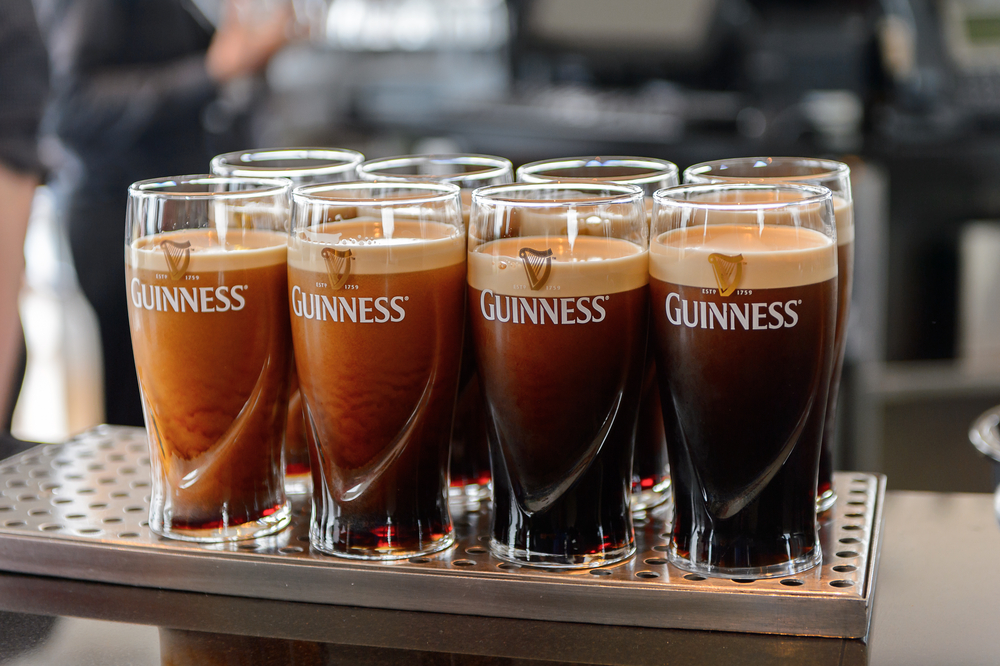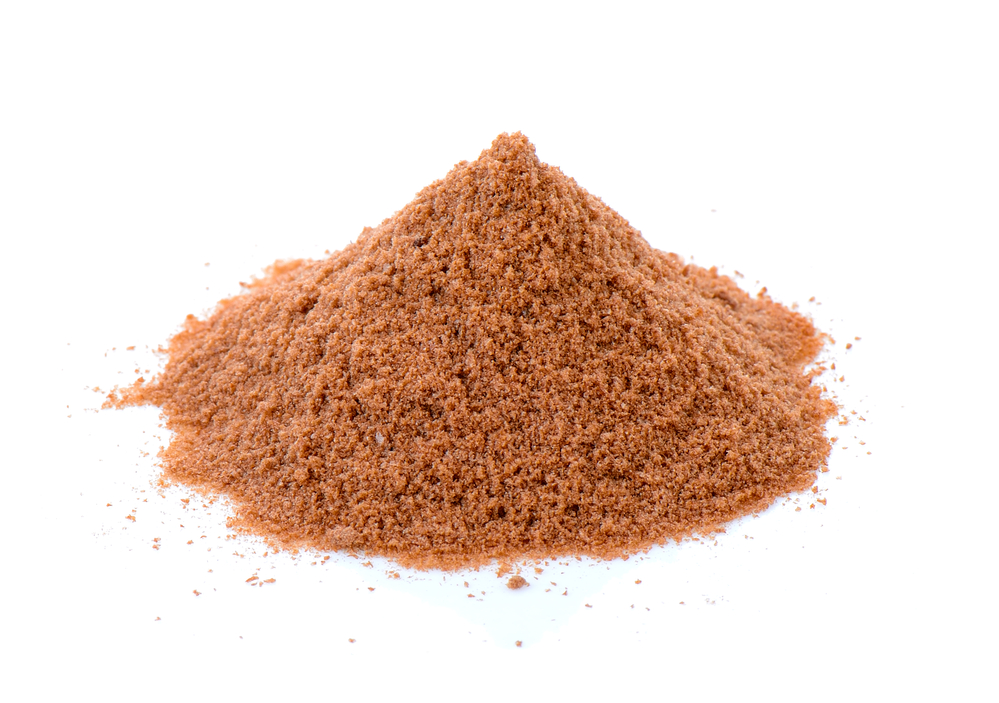When it comes to beer, taste is everything. As a beer lover, I’ve always been fascinated by the complexity of flavors and aromas that different beer styles offer.
From the bitter bite of hops to the sweet notes of malt, beer taste can vary widely depending on a variety of factors.
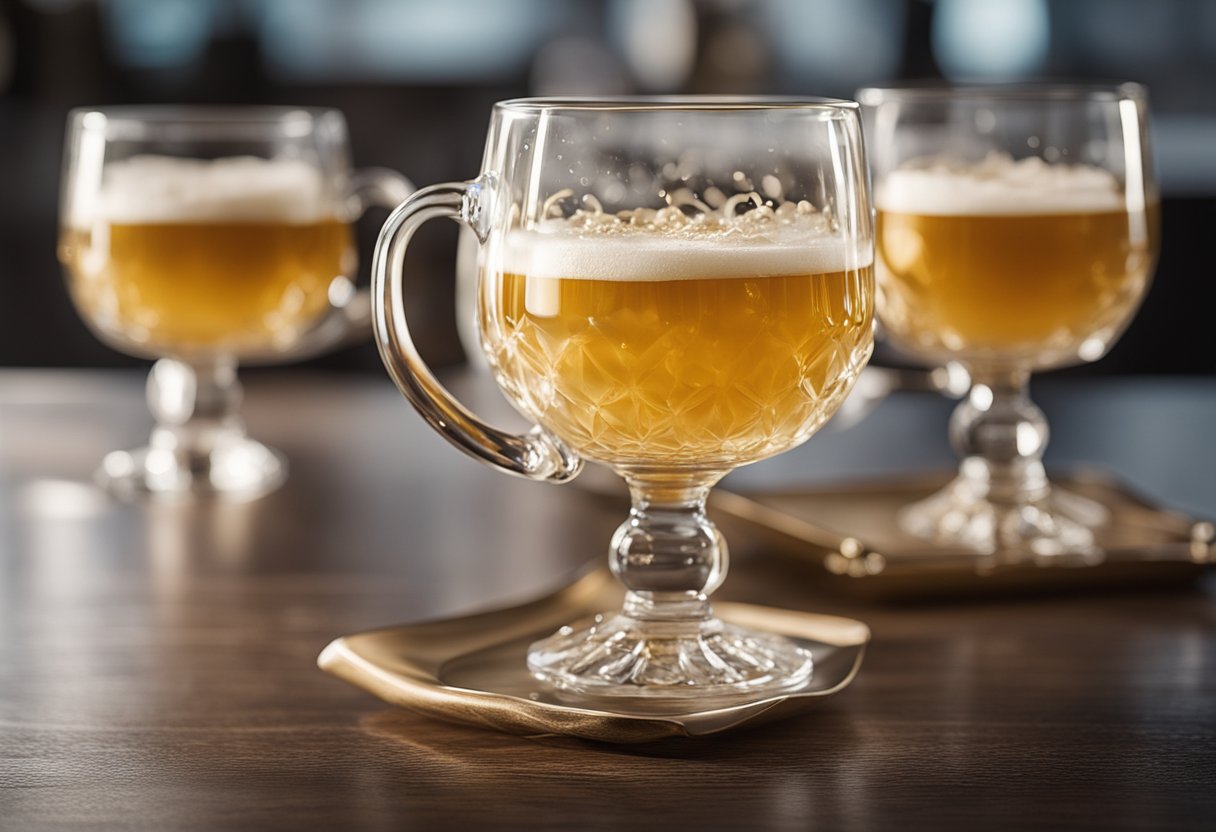
Understanding the basics of beer taste is essential for anyone who wants to fully appreciate the beverage. The taste of beer is influenced by a range of factors, including the ingredients used, the brewing process, and the style of beer.
In this article, I’ll explore these factors in more detail, so you can gain a better understanding of what beer tastes like and how to appreciate its flavors and aromas.
Key Takeaways
- Beer taste is influenced by a range of factors, including the ingredients used, the brewing process, and the style of beer.
- Different beer styles offer a wide range of flavors and aromas, from the bitter bite of hops to the sweet notes of malt.
- Understanding the basics of beer taste is essential for anyone who wants to fully appreciate the beverage.
Understanding the Basics of Beer Taste
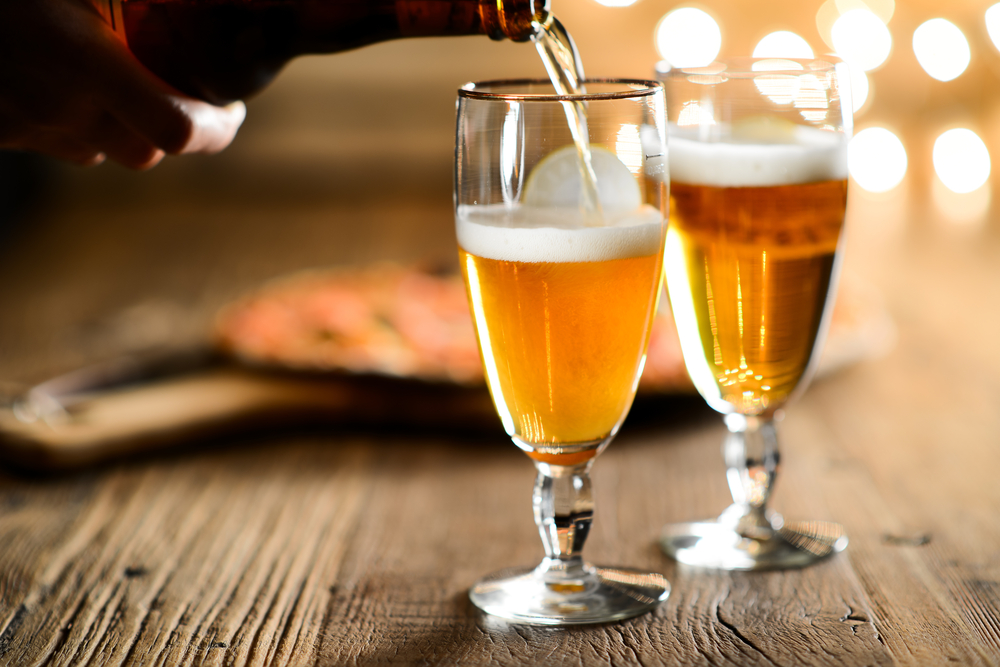
As a beer lover, I have come to appreciate the unique taste and flavor of different types of beer. Understanding the basics of beer taste is essential for anyone looking to enjoy a good brew.
In this section, I will explain the six basic flavors of beer and how they contribute to the overall taste and drinking experience.
The Six Basic Flavors of Beer
Beer can be either sweet or sour, and there are six basic flavors in beer: sweet, tart, bitter, spicy, phenolic, and astringent. Each of these flavors is influenced by the ingredients used in the brewing process, such as hops, yeast, water, and malt.
Sweetness
Sweetness is the most prominent flavor in beer, and it comes from the malted barley and other grains used in brewing. The sweetness can vary depending on the type of beer, with darker beers having a more pronounced sweetness.
Tartness
Tartness is a sour flavor that comes from the fermentation process. The sourness can vary depending on the type of yeast used, with some beers having a more pronounced tartness than others.
Bitterness
Bitterness is a flavor that comes from the hops used in brewing. Hops are added to beer to balance out the sweetness and add a bitter flavor. The bitterness can vary depending on the type of hops used and the brewing process.
Spiciness
Spiciness is a flavor that comes from the use of spices in brewing. Some beers, such as Belgian saisons, use spices like coriander and orange peel to add a spicy flavor to the beer.
Phenolic
Phenolic is a flavor that comes from the yeast used in brewing. Some yeasts produce a phenolic flavor that can be described as clove-like or smoky.
Astringency
Astringency is a flavor that comes from the tannins in beer. Tannins are found in the grains used in brewing and can add a dry, puckering sensation to the beer.
Conclusion
Understanding the basics of beer taste is essential for anyone looking to enjoy a good brew. By knowing the six basic flavors of beer and how they contribute to the overall taste and drinking experience, you can appreciate the unique characteristics of different types of beer.
The Role of Ingredients in Beer Taste
As a beer lover, I have always been curious about what gives beer its unique taste. After some research, I found that the taste of beer depends on the ingredients used in the brewing process.
In this section, I will discuss the role of some of the key ingredients in beer taste.
Water in Beer
Water is the primary ingredient in beer, making up about 90% of its composition. The quality of water used in brewing plays a crucial role in the taste of beer. Different regions have different water compositions, which can affect the taste of beer brewed in that region.
For example, hard water, which contains high levels of minerals like calcium and magnesium, can result in a bitter taste in beer. On the other hand, soft water, which has low mineral content, can result in a sweeter taste.
Yeast in Beer
Yeast is responsible for converting the sugars in the wort into alcohol and carbon dioxide during the fermentation process. The type of yeast used in brewing affects the taste of beer. There are two main types of yeast used in brewing: ale yeast and lager yeast.
Ale yeast ferments at warmer temperatures and produces fruity and spicy flavors, while lager yeast ferments at cooler temperatures and produces a clean, crisp taste.
Hops in Beer
Hops are added to beer during the brewing process to balance the sweetness of the malt and add bitterness and aroma. Hops contain alpha acids, which impart bitterness to the beer, and essential oils, which give beer its aroma.
The type and amount of hops used in brewing affect the taste of beer. For example, using hops with high alpha acid content will result in a more bitter taste, while using hops with high essential oil content will result in a more aromatic taste.
Grains in Beer
Grains, such as barley and wheat, are the source of fermentable sugars in beer. The type and amount of grains used in brewing affect the taste of beer.
For example, using roasted barley will result in a darker color and a roasted, coffee-like taste, while using wheat will result in a lighter color and a crisp, refreshing taste.
In conclusion, the taste of beer depends on the quality and quantity of the ingredients used in the brewing process. Water, yeast, hops, and grains all play a crucial role in determining the taste of beer.
As a beer lover, it’s fascinating to learn about the science behind what makes each beer unique.
The Impact of Fermentation on Beer Taste
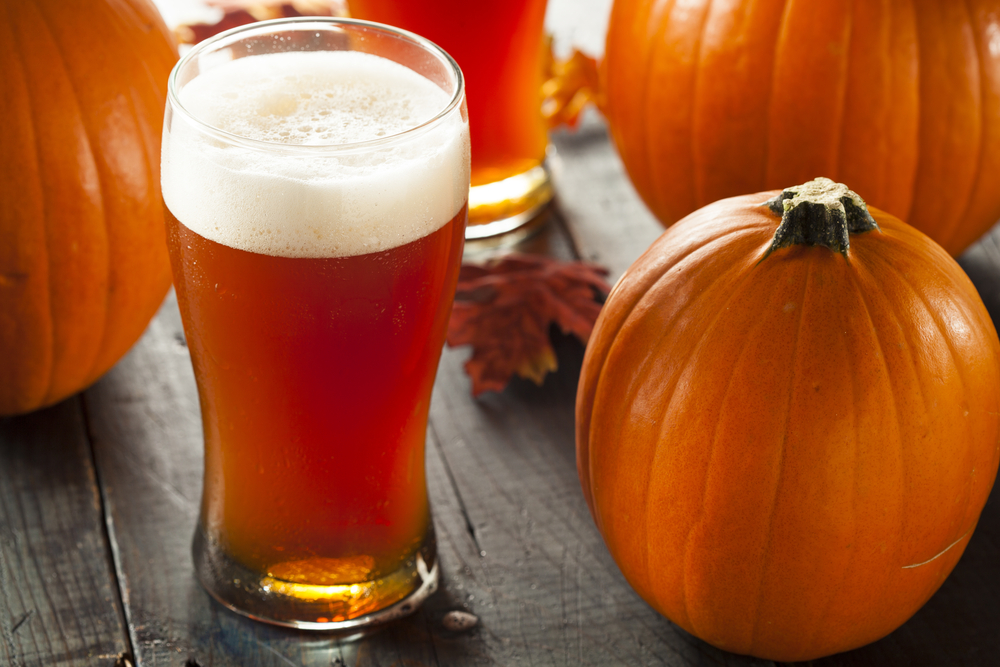
Fermentation is the process that converts sugars into alcohol and carbon dioxide. It is a crucial step in the beer-making process that determines the taste, aroma, and mouthfeel of the final product.
As a beer enthusiast, I have come to appreciate the importance of fermentation in creating unique and flavorful beers.
One of the most significant impacts of fermentation on beer taste is the type of yeast used. There are two main types of yeast used in beer-making: ale yeast and lager yeast.
Ale yeast ferments at warmer temperatures and produces fruity and spicy flavors, while lager yeast ferments at colder temperatures and produces a cleaner and crisper taste.
The choice of yeast strain can also affect the beer’s flavor profile. For example, some yeast strains produce esters, which give beer a fruity or floral aroma.
The length of fermentation also plays a role in the beer’s taste. A longer fermentation time can result in a more complex flavor profile, while a shorter fermentation time can produce a cleaner and simpler taste.
The alcohol content of the beer is also affected by the fermentation process. The longer the fermentation, the higher the alcohol content.
Another factor that can impact beer taste during fermentation is the type of fermenting vessel used. Some brewers use open fermenters, which allow for more oxygen exposure and can result in a more complex flavor profile.
Others use closed fermenters, which limit oxygen exposure and can result in a cleaner taste.
In conclusion, fermentation is a critical step in the beer-making process that impacts the taste, aroma, and mouthfeel of the final product.
The type of yeast used, the length of fermentation, and the type of fermenting vessel can all affect the beer’s flavor profile. As a beer enthusiast, I appreciate the unique and complex flavors that can be achieved through careful fermentation techniques.
Different Beer Styles and Their Tastes
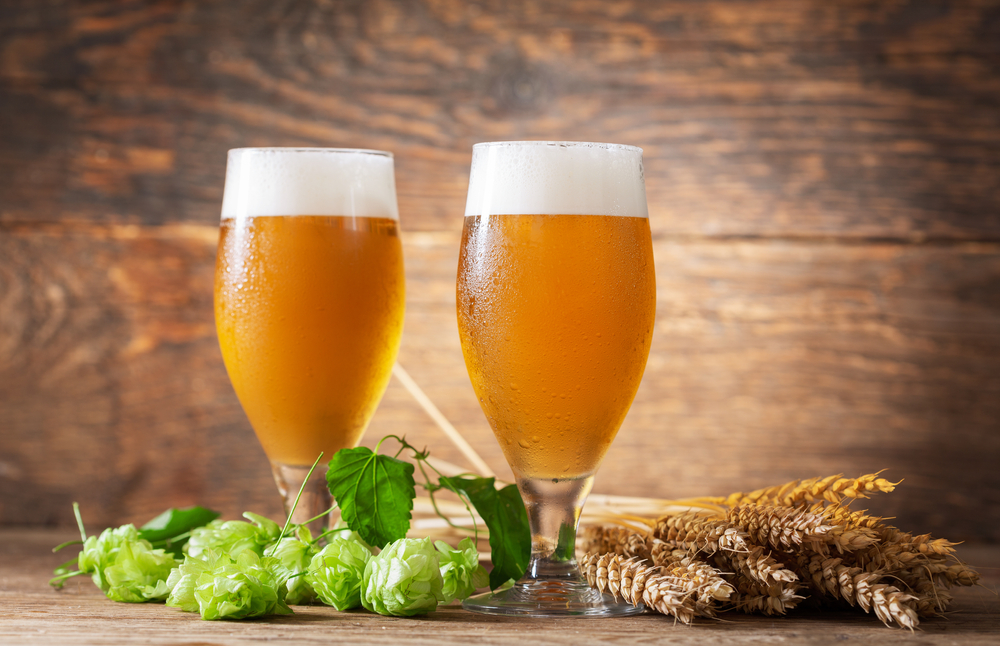
When it comes to beer, there are many different styles available, each with its unique flavor profile. Understanding the different styles of beer can help you find the perfect brew to suit your taste buds.
In this section, I’ll go over some of the most popular beer styles and their tastes.
Ale
Ales are a type of beer that are brewed with top-fermenting yeast, which gives them a fruity and complex flavor.
They tend to be full-bodied and have a higher alcohol content than lagers. Some popular ale styles include pale ale, brown ale, and Belgian ale.
Lager
Lagers are brewed with bottom-fermenting yeast and are known for their crisp and clean taste. They are typically lighter in color and have a lower alcohol content than ales.
Some popular lager styles include pilsner, bock, and Vienna lager.
Wheat Beer
Wheat beers are brewed with a high percentage of wheat, which gives them a light and refreshing taste. They tend to be cloudy in appearance and have a slightly sweet flavor.
Some popular wheat beer styles include hefeweizen, witbier, and Berliner Weisse.
IPA
IPA stands for India Pale Ale, and it is a type of beer that is known for its hoppy and bitter taste. They are typically higher in alcohol content and have a strong aroma.
Some popular IPA styles include West Coast IPA, New England IPA, and double IPA.
Amber Ale
Amber ales are known for their reddish-brown color and caramel-like flavor. They tend to be medium-bodied and have a slightly sweet taste.
Some popular amber ale styles include American amber ale and English bitter.
Porter
Porters are dark, full-bodied beers that have a roasted malt flavor. They are typically lower in alcohol content than stouts and have a slightly sweet taste. Some popular porter styles include American porter, Baltic porter, and English porter.
Stout
Stouts are dark beers that are known for their rich and creamy texture. They have a roasted malt flavor and tend to be higher in alcohol content than porters.
Some popular stout styles include Irish stout, oatmeal stout, and imperial stout.
In conclusion, the taste of beer can vary widely depending on the style you choose. Whether you prefer a light and refreshing wheat beer or a dark and rich stout, there is a beer out there to suit your taste buds.
By understanding the different styles of beer, you can find the perfect brew to enjoy on any occasion.
The Taste Spectrum of Beer
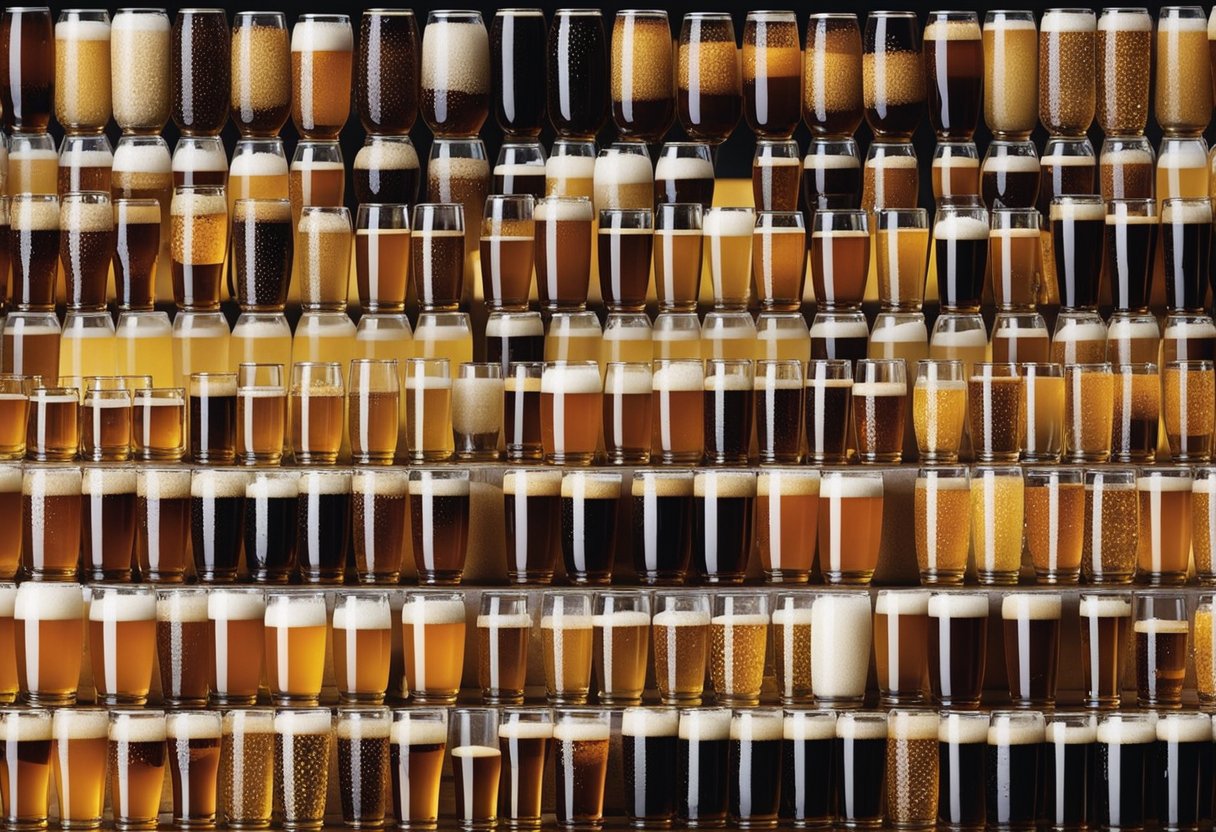
As a beer lover, I find the taste spectrum of beer to be fascinating. Beer can have a wide range of flavors, from bitter to sweet, sour to tart, fruity to spicy, and everything in between.
The taste of beer primarily depends on its ingredients, including water, malt, hops, and yeast.
Sweetness
Beer is made from sugars that come from malting barley and other carbohydrate-containing grains. Some brews also have sugars or molasses added to them to help in the fermentation process.
It is these sugars that are fermented by yeast to produce alcohol and carbon dioxide. The sweetness of beer can vary depending on the type of beer and the amount of residual sugar left after fermentation.
Bitterness
One of the most common flavors in beer is bitterness, which comes from the hops used in brewing. Hops are a type of flower that adds bitterness, flavor, and aroma to beer.
The bitterness of beer can vary depending on the type of hops used, the amount added, and the timing of the hop additions during the brewing process.
Sour and Tart
Some beers, such as sour beers and lambics, have a distinctive sour or tart taste. This is often achieved through the use of wild yeast or bacteria during the fermentation process.
Other beers may have a slight tartness from the use of certain grains or fruits.
Fruity and Spicy
Fruit and spice flavors can also be found in beer, either from the use of actual fruit or spice additions during the brewing process.
Some common fruit flavors include citrus, berry, and tropical fruit, while common spice flavors include clove, coriander, and cinnamon.
Chocolate and Malty
Chocolate and malt flavors can be found in darker beers such as stouts and porters. These flavors come from the roasted malts used in brewing, which can give beer a rich, chocolatey flavor.
Hoppy and Earthy
Hoppy beers, such as IPAs, are known for their strong hop flavor and aroma. Hops can give beer a range of flavors, from fruity and floral to earthy and herbal.
Ester, Bread, and Salty
Other flavors that can be found in beer include ester, which can give beer a fruity or floral aroma, bread, which can give beer a nutty or toasty flavor, and salty, which can give beer a slightly savory taste.
Overall, the taste spectrum of beer is vast and varied, with something to suit every palate. From sweet and malty to hoppy and bitter, beer offers a wide range of flavors and aromas to explore and enjoy.
The Influence of Color on Beer Taste
As a beer enthusiast, I have come across various beer styles with different colors. The color of beer is an essential aspect that can influence the consumer’s overall experience.
The color of beer can be light, dark, or roasted, and it is often an indication of the beer’s flavor profile.
According to a study published in Frontiers in Psychology, the color of beer can set expectations regarding the likely taste and flavor properties of the beer.
The study examined the influence of the color of beer on the consumer’s experience. Dark and pale beers were evaluated both before and after tasting.
The results showed that the color of beer can influence the consumer’s experience, including their perception of the beer’s taste, aroma, and overall liking.
Dark beers are often associated with a bitter taste, while pale beers are associated with a sweeter taste. The color of beer can also influence the perceived strength of the beer.
For example, darker beers are often perceived to be stronger than lighter beers. This perception can influence the consumer’s overall experience, including their willingness to try the beer.
The Science of Beer Color article by MoreBeer explains that beer absorbs light very well in the violet to blue spectrum and moderately well in the adjoining green spectrum.
Because these blue and green wavelengths are absorbed, we perceive the remaining wavelengths, which are in the yellow to red range. Thus, beers are often yellow, and they become more red as they darken.
In conclusion, the color of beer can influence the consumer’s experience, including their perception of the beer’s taste, aroma, and overall liking.
Darker beers are often associated with a bitter taste, while lighter beers are associated with a sweeter taste. The color of beer can also influence the perceived strength of the beer.
As a beer enthusiast, I believe that the color of beer is an essential aspect that should be considered when choosing a beer to try.
The Role of Carbonation in Beer Taste
Carbonation is an essential part of beer taste and drinking experience. The bubbles and fizz created by carbon dioxide gas during fermentation give beer its unique texture and mouthfeel.
Carbonation also affects the aroma, flavor, and appearance of beer.
One of the most noticeable effects of carbonation is the formation of a foamy head on top of the beer. The head is created when carbon dioxide gas is released from the beer and forms bubbles that rise to the surface.
The size and persistence of the head can vary depending on the type of beer, the level of carbonation, and other factors.
Carbonation can also affect the aroma of beer. The release of carbon dioxide gas during pouring can help to release volatile compounds that contribute to the aroma of the beer.
The level of carbonation can also affect the perception of aroma, with high levels of carbonation tending to accentuate fruity or floral notes.
In terms of flavor, carbonation can have a significant impact on the taste of beer. Over-carbonated beer can taste fizzy and acidic, with a sharp, almost sour taste.
On the other hand, beer with low carbonation levels may taste flat and dull. The ideal level of carbonation depends on the style of beer and personal preference.
Overall, carbonation plays a crucial role in beer taste and drinking experience. It affects the texture, aroma, flavor, and appearance of beer, and can have a significant impact on the overall enjoyment of the beverage.
The Effect of Temperature on Beer Taste
As a beer enthusiast, I know that temperature plays a crucial role in the taste of beer. The temperature at which you serve your beer can significantly impact its flavor, aroma, and overall drinking experience.
In this section, I will explain how temperature affects beer taste.
Serving Temperature for Different Beer Styles
Different beer styles have different serving temperature recommendations. Generally, lighter beers such as lagers, pilsners, and wheat beers should be served colder, while darker beers such as stouts, porters, and Belgian ales should be served warmer.
Here is a table that shows the recommended serving temperature for different beer styles:
| Beer Style | Serving Temperature |
|---|---|
| Lager | 38-45°F (3-7°C) |
| Pilsner | 38-45°F (3-7°C) |
| Wheat Beer | 42-48°F (6-9°C) |
| Pale Ale | 45-50°F (7-10°C) |
| IPA | 45-50°F (7-10°C) |
| Porter | 50-55°F (10-13°C) |
| Stout | 50-55°F (10-13°C) |
| Belgian Ale | 50-55°F (10-13°C) |
How Temperature Affects Taste
The temperature of beer affects its taste in several ways. When beer is too cold, it can mask its flavors and aromas, making it taste bland and uninteresting.
On the other hand, when beer is too warm, it can taste flat and dull, and the alcohol can become too prominent.
When beer is served at the right temperature, it can enhance its flavors and aromas, making it more enjoyable to drink. For example, a cold pilsner can be refreshing and crisp, while a room-temperature stout can be rich and complex.
Tips for Serving Beer at the Right Temperature
To serve beer at the right temperature, you can follow these tips:
- Store your beer in a cool, dark place before serving.
- Use a thermometer to check the temperature of your beer.
- Chill your beer in the refrigerator for a few hours before serving.
- If your beer is too cold, let it sit at room temperature for a few minutes before serving.
- If your beer is too warm, you can cool it down by placing it in an ice bucket or a cold water bath for a few minutes.
In conclusion, temperature plays a crucial role in the taste of beer. By serving beer at the right temperature, you can enhance its flavors and aromas, making it more enjoyable to drink.
The Impact of Alcohol Content on Beer Taste
As a beer lover, I have experimented with various types of beer and noticed that the alcohol content has a significant impact on the taste of beer. In general, the higher the alcohol content, the stronger the taste of alcohol in the beer.
Beer’s alcohol content is measured in ABV (alcohol by volume). The ABV of beer can range from less than 0.5% to over 20%.
The alcohol content of beer is determined by the amount of sugar that is converted into alcohol during the fermentation process.
Beers with a higher ABV tend to have a more complex taste, with a stronger alcohol flavor and a fuller body. However, the taste of high ABV beers can also be harsh and overpowering for some people.
On the other hand, beers with a lower ABV tend to have a lighter and more refreshing taste.
It’s important to note that the impact of alcohol content on beer taste can vary depending on the type of beer. For example, a high ABV IPA (India Pale Ale) will have a different taste profile than a high ABV stout.
In addition to the taste, the alcohol content of beer can also affect its aroma and mouthfeel. Beers with a higher ABV tend to have a more intense aroma, while beers with a lower ABV have a lighter aroma.
The mouthfeel of beer can also be affected by its alcohol content. High ABV beers tend to have a fuller and thicker mouthfeel, while low ABV beers have a lighter and more watery mouthfeel.
In conclusion, the alcohol content of beer has a significant impact on its taste, aroma, and mouthfeel. The higher the ABV, the stronger the taste of alcohol in the beer.
However, the impact of alcohol content on beer taste can vary depending on the type of beer. As a beer lover, it’s important to experiment with different types of beer to find the perfect balance of alcohol content and taste.
Understanding the Off-Flavors in Beer

As a beer enthusiast, I know that there are a variety of flavors and aromas that can be found in beer. However, not all of these flavors are desirable.
In fact, there are several off-flavors that can ruin the taste of beer. In this section, I will discuss some of the most common off-flavors found in beer and what causes them.
Sour
One of the most common off-flavors found in beer is sourness. This flavor is often associated with spoiled or expired beer. However, sourness can also be caused by certain types of bacteria that are present during the brewing process.
Lactobacillus is one such bacteria that can contribute to the sourness of beer. To avoid this off-flavor, it is important to ensure that the brewing equipment is properly cleaned and sanitized.
Tart
Tartness is another off-flavor that can be found in beer. This flavor is often described as being sharp or acidic. Tartness can be caused by a variety of factors, including the use of certain types of hops or the presence of wild yeast during the brewing process.
To avoid this off-flavor, it is important to carefully select the ingredients used in the brewing process and to closely monitor the fermentation process.
Gross
The final off-flavor that I will discuss in this section is grossness. This flavor is often described as being unpleasant or unappetizing. Grossness can be caused by a variety of factors, including the use of contaminated water or the presence of certain types of bacteria during the brewing process.
To avoid this off-flavor, it is important to carefully select the ingredients used in the brewing process and to ensure that all equipment is properly cleaned and sanitized.
In conclusion, understanding off-flavors is an important part of being a beer enthusiast. By knowing what causes these off-flavors, you can take steps to avoid them and ensure that your beer tastes great every time.
The Art of Tasting Beer
As a beer enthusiast, I have learned to appreciate the art of tasting beer. It’s not just about drinking it, but it’s about savoring the flavors and aromas that each beer has to offer.
Here are some tips that I have learned over the years to help you master the art of tasting beer.
Firstly, it is important to use the right glassware. Different styles of beer require different types of glasses to enhance their aroma and flavor.
For example, a Pilsner glass is tall and slender, which helps to showcase the beer’s color and clarity, while a tulip glass is ideal for Belgian-style beers as it captures the beer’s aroma and allows the head to develop.
Next, it is important to pour the beer correctly. Pour the beer at a 45-degree angle into the center of the glass to create a proper head.
This will release the beer’s aroma and allow you to fully appreciate its flavor. Also, make sure the glass is clean as any residue can affect the taste of the beer.
When tasting the beer, take your time to fully appreciate the flavors. Start by examining the beer’s appearance, noting its color, clarity, and head.
Then, take a deep sniff to appreciate the beer’s aroma. Finally, take a sip and let it sit on your tongue for a few seconds before swallowing. This will allow you to fully appreciate the beer’s flavors and mouthfeel.
It’s also important to pay attention to your taste buds. The four main taste buds are sweet, salty, sour, and bitter. Beer can have a combination of these tastes, and it’s important to recognize them to fully appreciate the beer’s flavor profile.
In conclusion, mastering the art of tasting beer takes time and practice. By using the right glassware, pouring the beer correctly, and taking your time to fully appreciate the beer’s flavors, you can become a knowledgeable beer taster and enjoy the full experience of drinking beer.
The Evolution of Beer Taste
As beer has evolved over the years, so has its taste. From the early days of beer production, where the taste was often harsh and bitter due to the lack of modern brewing techniques, to the current craft beer market, where the taste is often complex and nuanced, beer has come a long way.
In this section, I will explore the evolution of beer taste and how it has changed over time.
History of Beer Taste
Beer has been around for thousands of years, and its taste has changed significantly over time. Early beer was often brewed using a variety of ingredients, including herbs, fruits, and grains, which gave it a unique taste.
However, the beer produced in these early days was often harsh and bitter due to the lack of modern brewing techniques.
As brewing techniques improved, so did the taste of beer. The use of hops, for example, which was first introduced in the 11th century, gave beer a bitter taste that balanced out the sweetness of the malt.
This led to the development of new beer styles, such as the English Pale Ale, which is known for its bitter taste.
Market and Production of Beer Taste
The beer market has also played a significant role in the evolution of beer taste. In the early days of beer production, most beer was produced by small, local breweries, which often used traditional brewing techniques.
This led to a wide variety of beer styles, each with its own unique taste.
As the beer market grew, and larger breweries began to dominate, the taste of beer became more standardized.
This led to the development of mass-produced beers, which often had a similar taste and lacked the complexity of traditional beer styles.
However, in recent years, the craft beer market has emerged, and with it, a renewed interest in traditional brewing techniques and unique beer styles.
Craft breweries often experiment with different ingredients and brewing techniques, which has led to a wide variety of beer styles, each with its own unique taste.
Craft Beer and Beer Taste
Craft beer has played a significant role in the evolution of beer taste in recent years. Craft breweries often experiment with different ingredients and brewing techniques, which has led to a wide variety of beer styles, each with its own unique taste.
Craft beer is often characterized by its complex and nuanced taste. Many craft breweries use high-quality ingredients, such as locally-sourced hops and malts, which give their beer a unique flavor profile.
Craft beer is also often unfiltered and unpasteurized, which gives it a fresher taste and allows the flavors to shine through.
In conclusion, the taste of beer has evolved significantly over time, from the harsh and bitter beer of the early days of beer production to the complex and nuanced craft beers of today.
The beer market, production techniques, and craft beer movement have all played significant roles in the evolution of beer taste, and it will be interesting to see how beer taste continues to evolve in the future.
Frequently Asked Questions
How would you describe the taste of beer?
Beer taste can be described as a combination of sweet, bitter, and sour flavors. The taste of beer can vary depending on the type of beer, ingredients used, and brewing process.
Does beer have a good taste?
Whether beer has a good taste or not is subjective and varies from person to person. Some people enjoy the taste of beer, while others do not. It also depends on the type of beer and personal preferences.
Is beer sweet or bitter?
Beer can have both sweet and bitter flavors. The sweetness comes from the malted barley and other grains used in the brewing process, while the bitterness comes from the hops added to the beer.
What does alcohol beer taste like?
Alcohol beer has a similar taste to non-alcoholic beer, but with a slight alcohol taste. The alcohol taste can vary depending on the alcohol content of the beer.
Why does beer taste bad as a kid?
Beer can taste bad to kids because their taste buds are more sensitive to bitterness. As people grow older, their taste buds become less sensitive to bitterness, which can make beer taste better.
What does root beer taste like?
Root beer taste can be described as a combination of flavors, including vanilla, sarsaparilla root, caramel, licorice root, wintergreen, acacia, sweet birch, honey, cinnamon, molasses, anise, nutmeg, and black cherry bark. Root beer is a non-alcoholic beverage that has a sweet and slightly bitter taste.


